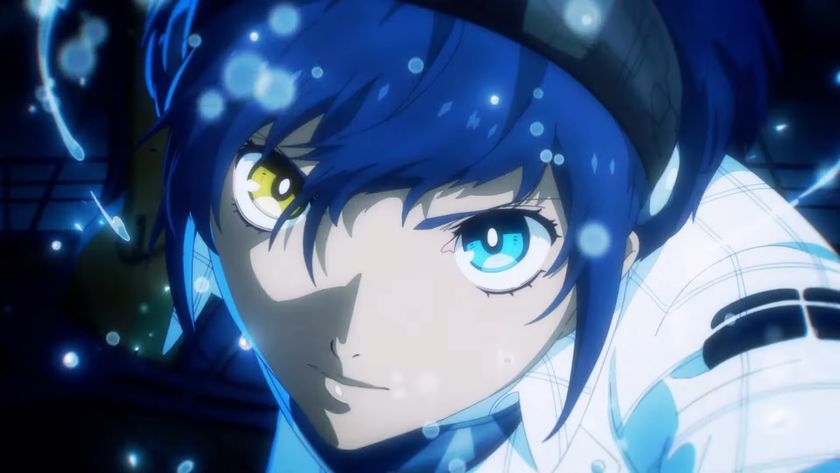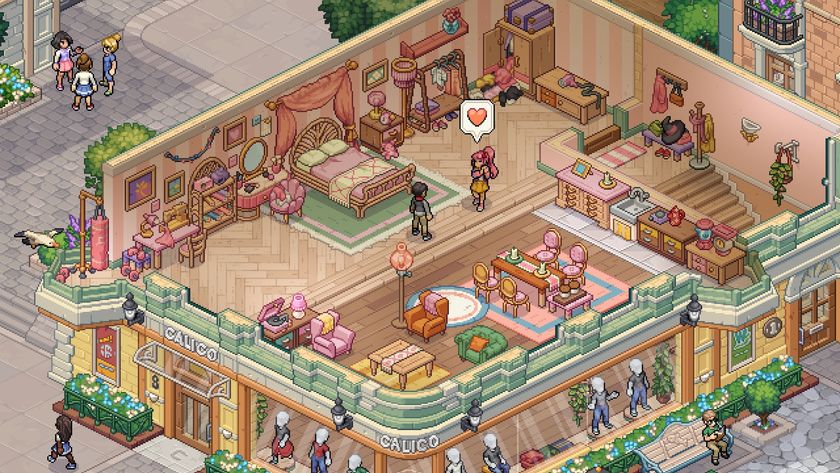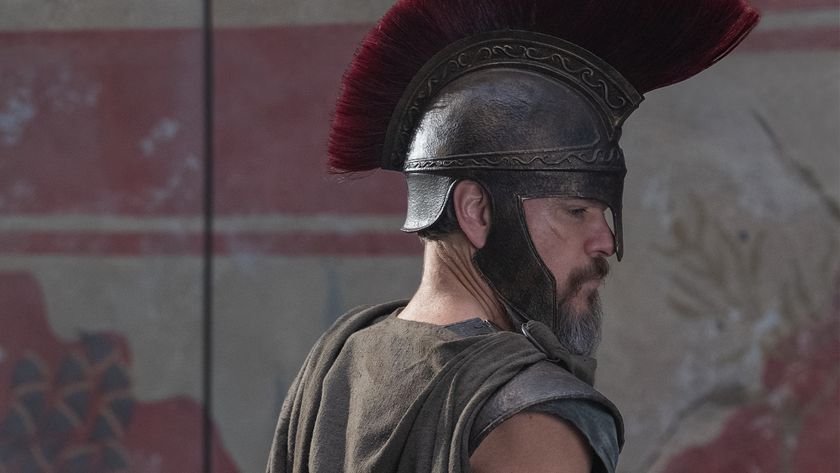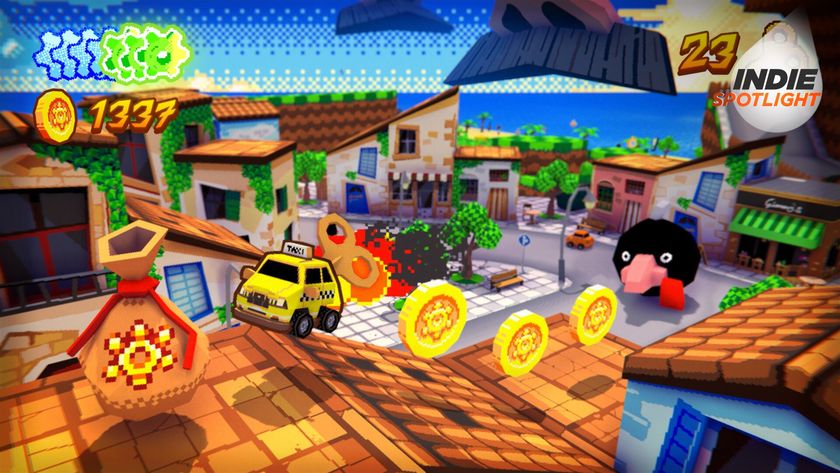The history of Platinum Games
How the fan favorite company came to be

Platinum maintains its luster forever
After arriving on the ninth floor of the impressive Umeda Sky Building, youll see the above motto in the offices of Platinum Games. The maxim sums up Platinums vision for quality when it comes to creating games, and its dedicated fans would agree that the developer often reaches the high bar it sets for itself. Gamers the world over anticipate every new game the company announces, but that international acclaim didnt just spring up overnight; it took years to cultivate.
Early 2013 features the US release of two new Platinum Games: Anarchy Reigns and Metal Gear Rising: Revengeance. As such, now's an ideal time to detail the history of the company to see just how the dedicated creators involved got to this point. It all began many years ago, at a little company called Capcom...

A team of little devils
In the mid-90s, Capcom had a huge new franchise on its hands with Resident Evil, thanks in no small part to three up-and-comers within the company. At the helm was Shinji Mikami, the creator of Resident Evil who oversaw the franchises quick success. Behind him was Atsushi Inaba, a rising star producer who supervised development on Resident Evil and its sequels. Lastly there was Hideki Kamiya, a designer on the first RE who served as director for Resident Evil 2, and who would soon begin work on Resident Evil 4 for the PlayStation 2. All three were quickly shaping the future of the firmly established publisher.
The trio and other core members of the dev team solidified into a more cohesive unit just as RE was making the transition to the next generation. After Kamiya and company had spent some time creating their would-be RE4, Mikami felt that the projects tone didnt fit Resident Evil. Instead of cancelling the game and starting over, the game became Devil May Cry, a game that pulled the action genre into the new millennium. Mikami took the reins on RE4 while Kamiya and the dev group nicknamed Team Little Devils worked on DMC, and Inaba served as a producer on the title.
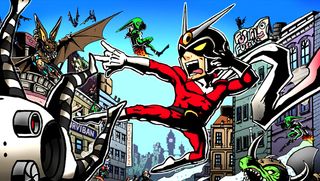
The Capcom Five gives way to Clover
After the GameCubes rough first year, the system got some high-profile support from the Capcom Five. The publisher announced five major games for the purple cube, including the curiously named Viewtiful Joe, a game directed by Kamiya and produced by Inaba. While other members of the Capcom Five were met with cancellation, lengthy delays, or poor sales, the viewtiful action-platformer was a big hit on the 'Cube. It was such a smash in 2003 that work quickly began on a PS2 port and sequel.
Capcom wanted a Viewtiful Joe 2 ASAP, but the developers pushed the publisher to let them create the game within a new, autonomous company. Capcom honored the request, allowing some of its most accomplished creators to form Clover Studios within the Capcom development system. The devs had less corporate oversight than a traditional internal studio, but Capcom still owned Clover and whatever games it created. Inaba acted as CEO, with Mikami and Kamiya heading up the creative aspects. The studios aim was to create new properties to join Capcoms already rich collection of franchises.

Joe sets the stage for Okami
Clovers early output focused primarily on the Viewtiful Joe franchise, as the developer pumped out the first sequel in 2004--a year after the original--and then released two more VJ titles (Viewtiful Joe: Red Hot Rumble and Viewtiful Joe: Double Trouble) the year after that. Viewtiful Joe quick success even led to an anime series in 2004. But while Joe paid the bills, Kamiya and Mikami were both working on totally new games that would hopefully prove Clover wasnt just a Viewtiful Joe factory.
The first of those projects, Okami, was revealed in 2004, and the buzz for the gorgeous cel-shaded title snowballed immediately. Kamiya was directing, and early images recalled the Edo era of feudal Japan. Meanwhile, as Mikami wrapped up work on Resident Evil 4, he and his dev team got to work on the off-kilter brawler that would eventually become God Hand.
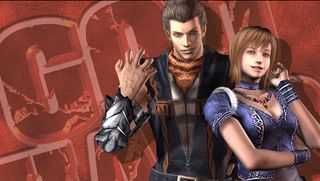
Clover runs out of luck
In early 2005 Clover seemed to be exploding with potential, which made the companys dire 2006 all the more unfortunate. First off, two different Viewtiful Joe titles--Viewtiful Joe: Red Hot Rumble and Viewtiful Joe: Double Trouble hit stores in 2005, and both garnered average reviews and lackluster sales. Okami had even worse luck, first with lower-than-expected sales in Japan, and then being met with ambivalence at US retail despite a glowing critical reception. And while Okami was on its way to becoming an underappreciated gem, the now-cult classic God Hand hit stores soon after to mixed reviews and even lower sales.
The writing was on the wall for Clover as creativity failed to translate to sales, and fans didnt have to wait long for the inevitable to happen. On October 12, 2006, two days after the US release of God Hand, Capcom announced it was closing Clover. At the same time it was announced that Mikami, Kamiya, and Inaba had also made their exits from Capcom following the closure.

From Seeds comes Platinum
As soon as fans heard of Clovers closure, they were dying to hear any news on the future of its staff, which came in February of 2007, when independent developer Seeds Inc. was formed with Inaba, Mikami, and Kamiya at the helm. At the time it was announced, Seeds already had 51 total employees, more than a few of them Clover alums.
Seeds' staff quickly came together to create games--and as the name implies, they were still focused on growing the future of the games industry through creativity and new franchises. In October 2007, Seeds quietly merged with another Osaka-based company, ODD Inc., and the new company became Platinum Games. Under that new name, its employees were hard at work crafting titles that wouldnt be seen by the public for almost a whole year.
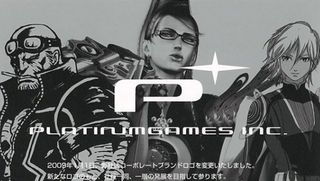
Platinum finds its first publisher
Platinum's independent ideals were all well and good, but none of their work would ever reach gamers without another party to fund and publish those games. Platinum eventually formed a partnership with Sega, a publisher that was ready to take a chance on the untested company.
In May of 2008, Platinum and Sega announced their plans launch new franchises over the next few years, and revealed the first three titles of the deal. Fans were instantly intrigued by Bayonetta, MadWorld, and Infinite Space, as they all had the same fresh creativity that Clover's previous titles had. And fans were further intrigued by the mysterious fourth game, which was rumored to be headed up by Shinji Mikami. As a result, Platinum became one of the hottest topics in gaming overnight.
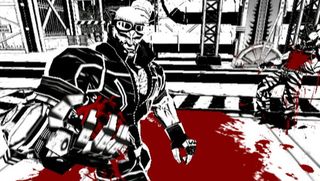
Platinum takes its shaky first steps
Platinum spent the next year developing and promoting its games with Sega, and the first of them hit stores March 2009 with the international release of MadWorld for the Wii. Critics were impressed by the artistic choice to limit the color palette to black, white, and red, along with its creative approach to extreme violence. Sadly, like Okami before it, that buzz didn't translate into sales, and MadWorld was relegated to cautionary-tale status--a prime example of what happens when M-rated games are released on the Wii.
After MadWorld, Infinite Space came to the DS in June of 2009 in Japan; its international release wasnt until March of the next year. An intentionally hardcore sci-fi RPG, Infinite Space focused on galactic warfare and customizing spaceships, and its modest sales reflected its niche audience. Infinite Space reviewed about as well as MadWorld, meaning that in its first year Platinum was unfortunately continuing Clovers success at being respected creators of poorly-selling games.
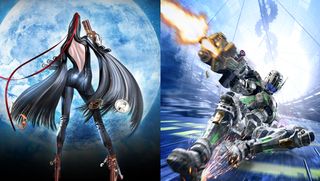
Bayonetta and Vanquish bring the action
After spending 2009 on Nintendo systems, Platinum started 2010 with with the international release of Bayonetta. Directed by Kamiya, Bayonetta was conceived as a spiritual successor to Devil May Cry, right down to the dev teams nickname of Team Little Angels. Like the previous Platinum releases, Bayonetta got high marks from critics, many praising its deep combat, humor, and gorgeous design--though the PS3 version of the game was hampered by a fair number of technical flaws. Despite that, Bayonetta quickly became the best-selling Platinum title of the time, eventually selling more than a million copies worldwide.
Later in January 2010, Platinum and Sega revealed their fourth game together would be Vanquish. Directed by Mikami--though he had since left Platinums internal team to build his own development house--Vanquish was a high energy sci-fi shooter that played like Gears of War, if you replaced its blood with jet fuel. When its October launch rolled around, the game was acclaimed for its kinetic approach to gunplay, though some took issue with its somewhat short campaign and lack of multiplayer. Ultimately its success didnt match Bayonettas, but Vanquishs sales were solid enough to put Platinum on much sturdier ground by the end of 2010.

Platinum gets its Revengeance
After releasing the fourth of its planned games with Sega, Platinums 2011 was a relatively quiet year. No new releases were announced outside of a fifth game with Sega titled Anarchy Reigns, which was a co-op brawler and pseudo-sequel to MadWorld. The few times Platinum did come up in the news all involved a rumor that the company had taken over development on Metal Gear Rising from Kojima Productions--something Platinum denied.
That all changed on December 10, 2011 when Metal Gear creator Hideo Kojima and Inaba took the stage at the Spike Video Game Awards to unveil the newly retitled Metal Gear Rising: Revengeance. It marked the first time Platinum was working on a different companys franchise, but all of Platinums strengths were still on display. The cybernetic samurai action starring the once-hated Raiden looked like a perfect implementation of Platinums abilities in the Metal Gear universe.
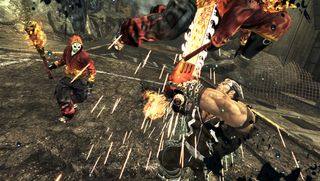
A chaotic journey for Anarchy Reigns
Much of Platinums 2012 was spent working on Anarchy Reigns and Revengeance, the latter of which some promising demos of the game shown at events like E3, PAX, and Tokyo Game Show. By the end of the year a new demo was released to the public, first in Japan, and then internationally. Meanwhile, as buzz built for its Metal Gear game, Platinum was having some trouble getting Sega to release Anarchy Reigns.
Anarchy Reigns may have been announced in early 2011, but Sega had said little else about the game by mid-2012. After fans kept inquiring, Platinum eventually commented in May that it had completed work on the game, but that Sega currently had no planned release date for Anarchy Reigns outside of Japan. Sega didnt comment on AR for much of the year, and from the outside it seemed things werent going too smoothly for the publishing partners. In October of 2012, Sega finally confirmed a January 2013 release for the game, and at the value price of $29.99.
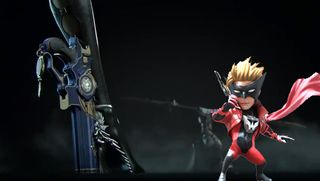
A new home on Wii U
On top of Platinums PS3/360 releases, the independent studio also found a new publishing partner in Nintendo. E3 2012 was the formal debut of the first real games for the Wii U, and to the surprise of many, a previously unannounced Platinum game was among them. First announced as Project P-100 and later renamed The Wonderful 101, its the next title with Kamiya in the directors chair. The gameplay feels like a mix of Viewtiful Joe and Pikmin that utilizes the GamePad in creative ways, currently making it one of the most anticipated Wii U games.
And that was hardly the last surprise Platinum had planned for the Wii U. At the September event where Nintendo revealed the price and launch date for its next home console, a brief trailer revealed the long-awaited Bayonetta 2. The first sequel to date for Platinum, most fans were thrilled to see a follow-up, though a few diehards gritted their teeth at it being a Wii U exclusive. Some of that anger subsided when the developers confirmed that had Nintendo not come on as publisher, the game wouldnt exist. Little has been shown of the game other than that teaser, something that will likely change in 2013.
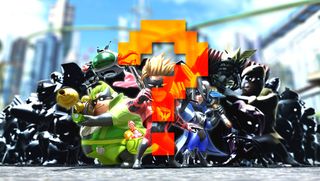
What's next for Platinum?
Despite some rocky moments, the future seems brighter than ever for Platinum. January has Anarchy Reigns, February 21 is the launch for Revengeance, The Wonderful 101 is planned for release in the first half of the year, and at some point in the next 12 months we can expect to see Bayonetta 2 in action. But is your outlook on the company as positive as ours? Wed love to know what you think of Platinums past, present, and future, so please tell us in the comments!
Need more Platinum love? Check out 13 awesome things we did in Metal Gear Rising: Revengeance and why Okami is one of the greatest games ever made.

Henry Gilbert is a former 12DOVE Editor, having spent seven years at the site helping to navigate our readers through the PS3 and Xbox 360 generation. Henry is now following another passion of his besides video games, working as the producer and podcast cohost of the popular Talking Simpsons and What a Cartoon podcasts.


